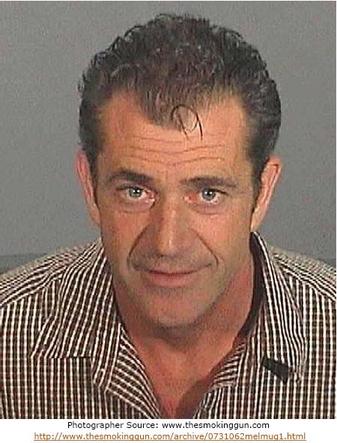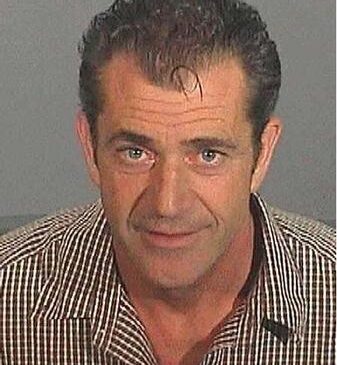Risky behaviors like, driving under the influence, are common among Hollywood celebrities. For example, Mel Gibson was caught drunk driving this past month and later apologized for his “belligerent behavior” (CNN, 2006). He also admitted that he has struggled with alcoholism for much of his life. Compared to the general population, celebrities are twice as likely to have alcohol-related problems (Ludwig 1995, as cited by Morin & Craig, 2000). A variety of factors might impact celebrity substance abuse and risky behaviors. For example, celebrities might be more drawn to a hedonistic lifestyle that includes alcohol and other illicit substances. Is fame a risk factor for destructive behavior? This week’s Addiction and the Humanities explores the limited research on how fame might play a role in the development of risky behaviors and substance abuse.
Morin & Craig (2000) found that students and faculty who were well-known scored higher on self-consciousness and there was a significant negative relationship between self-esteem and self-consciousness. Participants who were the most self-conscious had the lowest self-esteem. High self-consciousness and low self-esteem predicted increased alcohol use. Since celebrities often garner unwanted attention, they would be likely to exhibit high self-consciousness and low self-esteem. However, the participants in the study were not celebrities, thus Morin & Craig’s findings require more research on more well known individuals.

Schaller’s (1997) case analyses of Kurt Cobain, Cole Porter, and John Cheever, support the fame and self-esteem relationship. He found that self-esteem moderated the relationship between self-consciousness and self-destructive behaviors. Kurt Cobain was the famous lead singer for Nirvana and had a history of narcotic use. He committed suicide in 1994. Cole Porter was an eminent song writer in early 20th century and suffered from alcoholism. John Cheever was an award-wining writer and also suffered from alcoholism. The study measured the artists’ work for self-consciousness before and after they became famous. For Cobain and Porter, their song lyrics were coded for the use of first person pronouns and for Cheever, his writing was coded for first person and third person narration. The study found that these subjects became more self-conscious after they became famous. There was also a positive relationship between Cheever’s alcohol use and self-consciousness.
However, Schaller’s study did not assess other factors like mental health, wealth, and social support that also might have influenced their substance use; in fact, both Porter and Cobain suffered from depression. In addition, Cheever and Porter had family histories of alcoholism that would make them more susceptible to alcoholism. Given the limited evidence it is possible that the stresses that come with fame catalyzed their alcoholic behaviors, or perhaps fame was completely unrelated to their substance abuse.
Fame comes with heightened scrutiny, attention, and many other stressful conditions. It is possible that celebrities engage in self-destructive behaviors as a way to cope with their fame. The Self-Medication Hypothesis proposed that people use substances to relieve distress and that use can grow into an addiction to the medicating substance (Khantzian, 2003). Furthermore, coping with the stress of fame via self-medication may propel at-risk individuals with low self-esteem to dangerous behaviors like driving under the influence. Still, more research on fame and risky behaviors like driving under the influence is needed to further examine these issues. This relationship is complicated by other variables like increase in wealth, prior mental health history, and social environment; these factors must be considered in future research.
Celebrities might be at increased risk for dangerous behaviors like substance abuse, because of increased self-consciousness, in addition to general risk factors like heredity. Celebrity treatment programs should consider the unique risk factors when treating famous individuals and provide effective strategies to help them cope with their fame and the pressures that go along with it. Organizations and recovering celebrities need to work together in encouraging others to seek help and raise awareness about risky behaviors such as DUI.
What do you think? Comments can be addressed to Sarbani Hazra.
REFERENCES
CNN. (2006). Gibson apologizes for behavior. Retrieved August 24, 2006, from http://www.cnn.com/2006/SHOWBIZ/Movies/07/28/gibson.dui/index.html
Khantzian, E.J. (2003). The Self-Medication hypothesis revisited: The dually diagnosed patient. Primary Psychiatry, 10 (9), 47-54.
Morin, A., & Craig, L. (2000). Self-awareness, self-esteem, and alcohol use in famous and relatively well-known individuals. Current research in social psychology, 5(16), 236-253.
Schaller, M. (1997). The Psychological Consequences of Fame: Three Tests of the Self-Consciousness Hypothesis. Journal of Personality, 65(2), 292-308.




